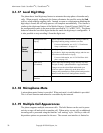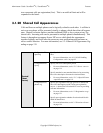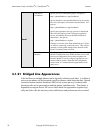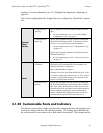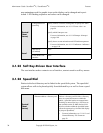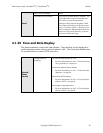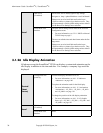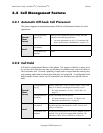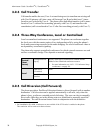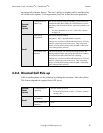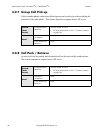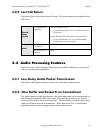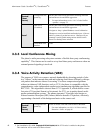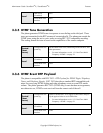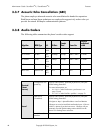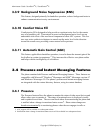
Administrator Guide - SoundPoint
®
IP / SoundStation
®
IP Features
38 Copyright © 2004 Polycom, Inc.
3.2.3 Call Transfer
Call transfer enables the user (User A or transferring user) to transform an existing call
with User B (primary call) into a new call between User B and a third user C (trans-
ferred-to user) selected by User A. The phone offers both blind transfers (call is trans-
ferred to User C without first consulting privately with User C) and transfers with
consultation (call is transferred to User C after first consulting privately with User C).
3.2.4 Three-Way Conference, Local or Centralized
Local or centralized conferences
1
are supported. The phone can conference together
the local user with the remote parties of two independent calls by using the phone’s
local audio processing resources for the audio bridging. For a local conference there is
no dependency on network signaling.
The phone also supports centralized conferences for which external resources are used
such as a conference bridge. This depends on network signaling.
3.2.5 Call Diversion (Call Forward)
The phone provides a flexible call diversion feature to divert (forward) calls to another
destination. Call diversion can be applied automatically to all calls, only when the
phone is busy, or after an extended period of alerting. The user can elect to manually
divert calls while they are in the alerting state to a predefined or manually specified
destination. The call diversion feature works in conjunction with the distinctive
1. On SoundStation IP
®
4000, conferences are not available if the G.729 codec is enabled on the phone.
This restriction will be removed in future releases.
Central
(boot
server)
Configuration file:
sip.cfg
Specify which type of conference to establish and the
address of the centralized conference resource.
• For more information, see 4.6.2.1.3.5 Conference Setup
<conference/> on page 118.
Local
Web Server
(if enabled)
None.
Local Phone User
Interface
None.



